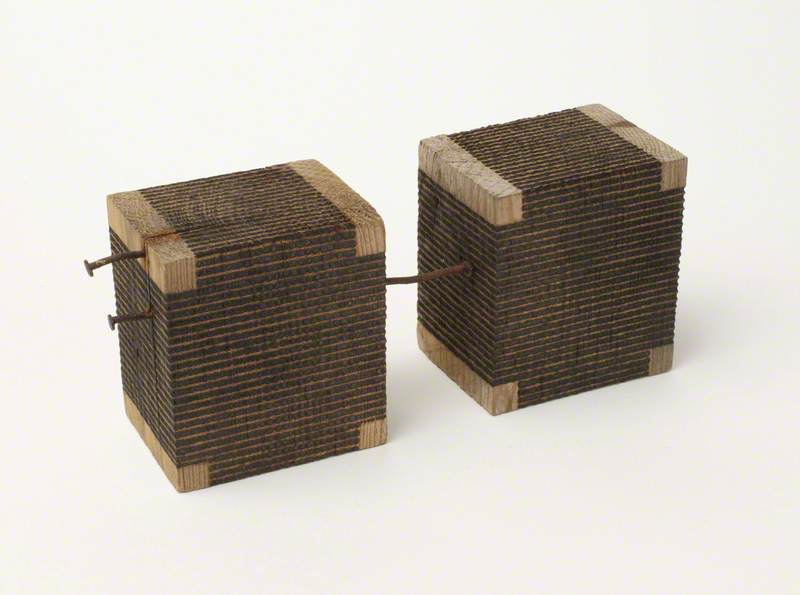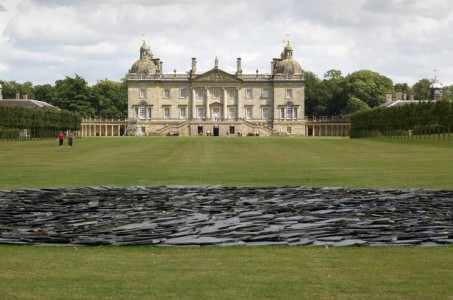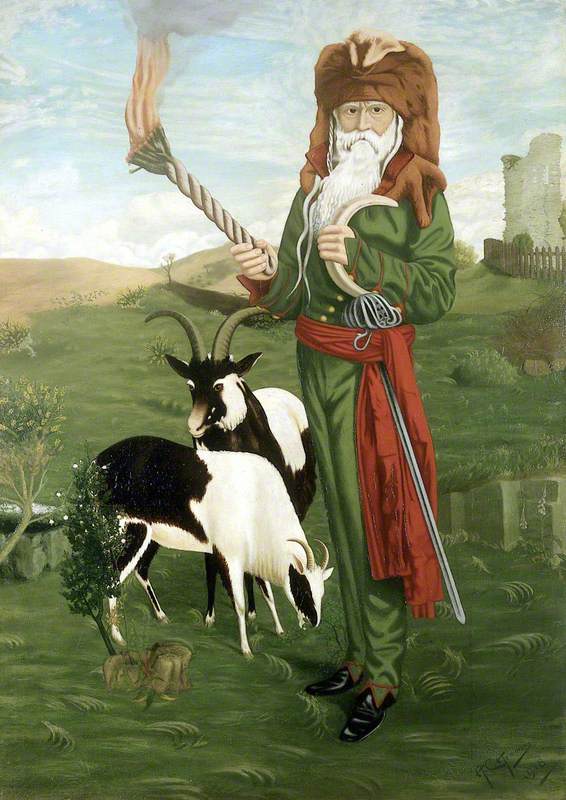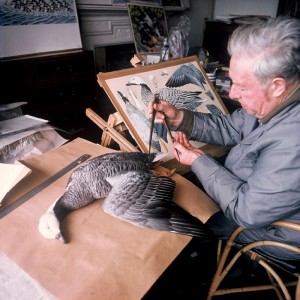For over four decades, artist Roger Ackling made work with sunlight. His medium travelled about 93 million miles to shine over his right shoulder, caught a few feet above the ground by his hand-held magnifying glass, its rays then focused onto a piece of wood in his left hand. Usually sitting, always outside, Ackling made work in intense bursts of activity when the sun shone through the spring and summer months. His materials most commonly presented themselves to him, either on walks or, in later years, acquired as ready-made objects, or sometimes brought to him by friends.
Voewood
2011–2012, sunlight on wood by Roger Ackling (1947–2014) 
Through this working practice, Ackling – like his contemporaries Richard Long and Hamish Fulton – challenged the traditional methods of making sculpture by taking his art out of the studio and into the environment.
Ackling made his art with a singularly light touch, or no touch at all. The burning of the wood in a series of tiny black dots, miniature negative images of the sun, was to some extent hands-off, an extreme photographic over-exposure resulting in a carbonised scarification of the wood, akin to a tattoo. As he worked, his attention was on the progress of the burning point across the surface of the material cradled in his left hand. And it is perhaps that holding of the material, as well as the very human variations of the burnt line, that gives the works a powerful sense of touch.
Roger Ackling
Ackling's works are light-touch too in terms of economy and consumption. The support material is often driftwood, but later Ackling used materials with a more recent industrial purpose, ice-cream spoons which the artist called 'lolly sticks', doorknobs, vegetable crates and gardening tools. These also evidence a previous life and purpose, though less enigmatically than the driftwood, whose weathered marks, traces of paint and protruding nails both signify and anonymise a former utility. This is an art form for our time, making use of what was already there, wasting nothing, releasing just a wisp of smoke into the air.
Japan
1984, sunlight on wood by Roger Ackling (1947–2014) 
'SUNLIGHT' is the first major survey and the most significant exhibition of Ackling's work to date. It is on display at Norwich Castle Museum & Art Gallery until 22nd September 2024. The exhibition is co-curated by Dr Rosy Grey (Curator of Modern & Contemporary Art at Norwich Castle Museum & Art Gallery) alongside Amanda Geitner, who is Director of the East Anglia Art Fund and is doing a PhD by practice: 'Roger Ackling: Work and Teaching', with Norwich University of the Arts.
Orkney/Voewood
2008, sunlight on wood with screws by Roger Ackling (1947–2014) 
This exhibition began with Amanda Geitner's comprehensive examination of the Ackling Archive, given to the Henry Moore Institute in Leeds by Sylvia Ackling in 2018. The archive presents a picture of Roger as a highly networked, tirelessly active artist and teacher who put a great deal of energy into the lives of younger artists. He exhibited as constantly as he taught – the making, teaching and exhibiting continuing in concert, each activity informing the others.
Voewood
2006, sunlight on wood with pins by Roger Ackling (1947–2014) 
To understand the enduring significance of Ackling's teaching and the importance of his work and installations to his students, Amanda interviewed selected artists and curators. An edited film compilation of these interviews accompanies the exhibition. Together, these three elements – the work, the archive and the interviews – reveal the breadth of his practice, from his earliest experiments with a lens to his final works made in the last months of his life.
Weybourne
1997, sunlight on wood by Roger Ackling (1947–2014) 
While Ackling is best known for his work on found driftwood, 'SUNLIGHT' expands this reputation to include lesser-known works, which use domestic wooden objects and tools and incorporate readymade elements such as elastic bands and mapping pins. The exhibition also features works on card and paper that have not been exhibited in the UK.
'SUNLIGHT: Roger Ackling', Norwich Castle Museum and Art Gallery, installation view
'SUNLIGHT' introduces Ackling's work to a new generation of audiences, prompting important conversations about the status of the object, the significance of materials, the processes of making and the transformative power of display.
'SUNLIGHT: Roger Ackling', Norwich Castle Museum and Art Gallery, installation view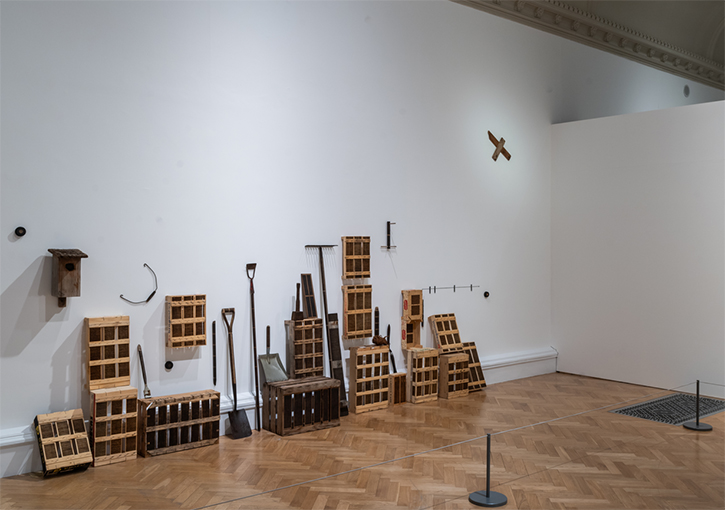
The project seeks to enhance our understanding of Ackling's work and to explore how we might show his work following his example. Marking ten years since Ackling's death, 'SUNLIGHT' is our heartfelt celebration of an artist whose influence continues to operate as quietly and powerfully as his work.
'SUNLIGHT: Roger Ackling' is on display at Norwich Castle Museum and Art Gallery until 22nd September 2024
'SUNLIGHT' is developed in partnership with the artist's estate, Annely Juda Fine Art, the Henry Moore Institute and the Pier Arts Centre. The exhibition is supported by Norfolk Museums Service, Arts Council England, The National Lottery Heritage Fund, Norwich City Council, Norfolk County Council, East Anglia Art Fund, Henry Moore Foundation, Norwich University of the Arts and Art Fund


